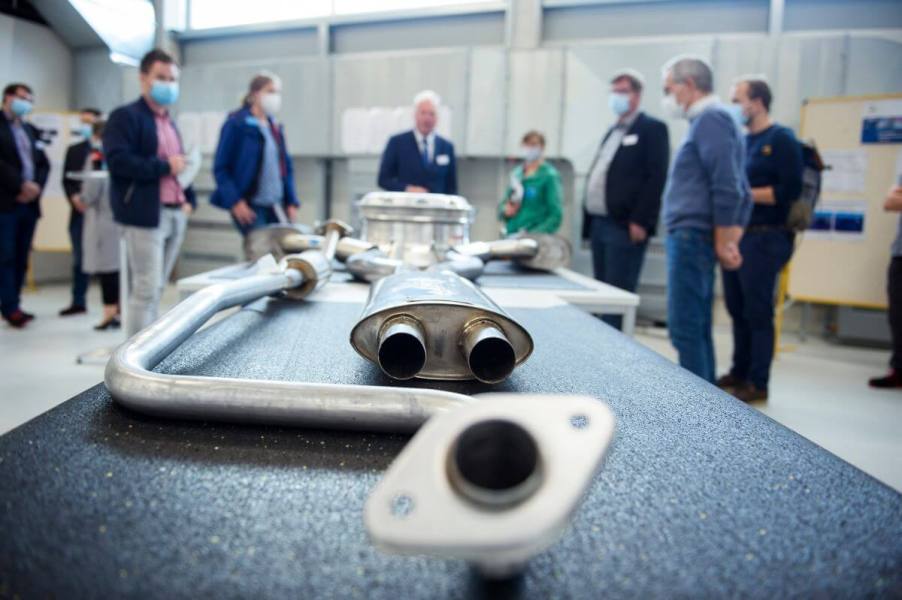
What’s the Difference Between a Car’s Exhaust and Tailpipe?
A lot of people, car enthusiasts included, use automotive terms interchangeably. For instance, someone might ask, “What motor does your ’68 Camaro have in it?” However, they really want to know the cubic inch displacement of the V8 engine under the hood. Likewise, people sometimes use the term tailpipe to call out the entire exhaust system, probably because it’s the most visible part. So, what are some other parts of the exhaust system, along with some maintenance items?
What does a car’s exhaust system do?
Walker Exhaust says when an internal combustion engine (ICE) burns gasoline, it creates carbon monoxide (CO), unburned hydrocarbons (HC), and oxides of nitrogen (NOX), among other byproducts. While these compounds occur naturally in the environment from several sources, they are harmful to humans when concentrated in engine exhaust. A car’s exhaust system works to reduce some of these chemicals and route the remainder safely away from the vehicle’s passenger compartment.
So, what is a tailpipe?
Minit-tune describes the tailpipe, or tailpipes if your car has more than one, as the final piece of the exhaust system. After the exhaust gasses pass through the system’s cleaning stage, noise reduction, and sensors, the tailpipe, often fitted with attractive chrome or color-matched exhaust tips, releases the remaining exhaust gas into the atmosphere. You’ll usually find your car’s tailpipe and any attached exhaust tips at the rear of your car or sometimes tucked in behind one or both rear tires, protruding ever-so-slightly out from under the vehicle.
However, there’s more to the tailpipe than the part we see when walking past our car. From its position at the edge or rear of the vehicle, the tailpipe extends forward, passing over and around the rear axle or suspension, where it joins the rest of the exhaust system.
What components make up a car’s exhaust system?
Park Muffler lists the components of a car’s exhaust system from front to back as follows:
- Exhaust manifold
- Oxygen sensor
- Catalytic converter
- Muffler
- Exhaust pipe or tailpipe
The exhaust manifold
Most car engines utilize the basic four-stroke cycle:
- Intake – The fuel/air mixture enters the engine’s cylinder on the intake stroke.
- Compression – The compression stroke compresses that mixture.
- Power – A spark from the spark plug ignites the fuel, pushing the piston down on the power stroke.
- Exhaust – Finally, the piston rises again to push the burned gases into the exhaust manifold before starting the cycle over again.
The oxygen sensor
The oxygen, or O2, sensor is usually threaded into a hole in the exhaust manifold and measures the amount of oxygen in the burned exhaust gasses. The vehicle’s computers use this information to adjust the amount of fuel it provides the engine to reduce waste and pollution. Faulty O2 sensors are a common source of a check engine light.
The catalytic converter
Most catalytic converters contain some combination of platinum, palladium, and rhodium, metals that cause a chemical reaction to convert some of the harmful gasses into water vapor and carbon dioxide. Unfortunately, this mixture of precious metals makes CCs a common target for thieves. Catalytic converters are also another common source of exhaust system failure.
The muffler
Your car’s muffler reduces the engine noise that escapes into the environment. Without mufflers, normal conversation would be difficult inside a running vehicle or near busy streets or highways. Mufflers often collect water vapor from the exhaust and tend to rust before other exhaust system components.
The tailpipe
The tailpipe is the final piece. Although Park Muffler calls it the exhaust pipe, “exhaust pipe” connects the other parts of the exhaust system, such as the exhaust manifold to the catalytic converter and the catalytic converter to the muffler. The tailpipe often connects directly to the muffler and exits the vehicle as described.
Now that you know the difference between a car’s exhaust and a tailpipe, like other automotive jargon, mixing and matching terms among friends is acceptable, as long as you don’t go into your local muffler shop and ask them to replace your car’s exhaust when all you need is a new tailpipe.





